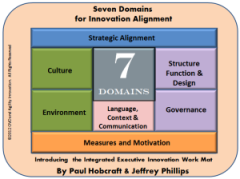
People disconnect because they lack what is needed to connect! Innovation thrives from the knowledge and you need to make sure this is allowed to flow.
To achieve those essential knowledge connections, you need a shared understanding of innovation, that common sense of purpose as a framework. This will though, always stay a work-in-progress.
You need to begin to build a common language of greater understanding. We need to unite around innovation. Imagine if you work consciously to put knowledge in the hands of people willing to make innovation happen, what the potential might be?
Give people the power of the context for their innovation engagement and that shifts everything to give them a clearer shape and meaning. You are laying out the conditions, criteria and circumstances, giving innovation its foundations.
Continue reading “Successful Innovation needs a common language, context and communicating”








